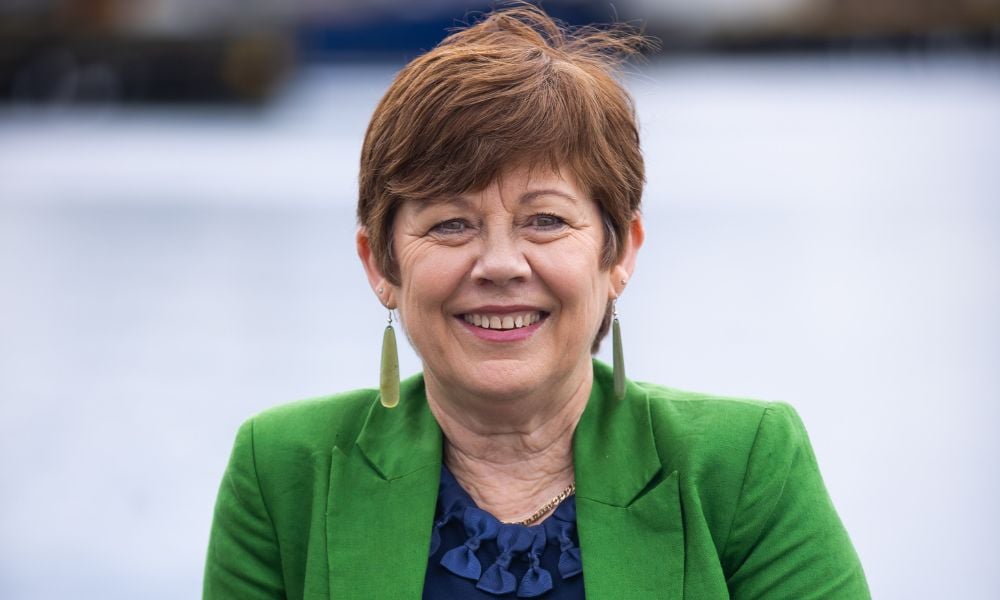
'It's the right thing to do,' says CPO at Contact Energy – and it's also 'an attractive proposition'

Earlier this week, the government announced plans that, if re-elected, it would introduce four weeks’ parental leave for partners.
The new scheme would be phased in from 1 July 2024 and leave can be taken either concurrently or consecutively with the primary carer, according to the Labour party. It’s in addition to the current statutory entitlement of two weeks' unpaid leave and will be paid for by government.
The proposition is appealing to many, but for some employees, it’s already a reality.
Those at Contact Energy are among them. Just last year, the organisation launched a parental leave policy called “Growing your Whānau,” which includes four weeks’ paid annual leave for partners.
Jan Bibby, Chief People Experience Officer at the organisation, says introducing the policy has been a career highlight.
“We had an aspiration to be Aotearoa’s most sought-after workplace, so if you want to have that, you've got to be willing to look at everything you do and determine ‘Is that really going to attract people to want to come to work at Contact?’,” says Bibby.
“We have people who are thinking about joining us who will mention it’s one of the real attractions.”
At a recent HR leaders forum, a hot topic was the struggle in hiring great people, she says.
“If you’re going to stand out amongst the crowd, you've got to make coming to work in your organisation an attractive proposition. And it's just the right thing to do for caregivers.”
For primary carers, Contact’s Growing your Whānau package also includes a top-up to full salary for 26 weeks, Kiwisaver employer contributions for the duration of parental leave and six months’ flexible working whereby employees can choose to work 80% of their normal weekly hours and still receive 100% of their normal pay for six months.
A koha payment of $5000 is also made as a contribution towards childcare, as well as 10 days’ special annual leave for pregnancy-related appointments, and a food package of pre-prepared meals on the arrival of baby.
Bibby admits that when she and her team presented the aspirational proposal to the organisation’s executives, she was surprised at how positively it was received.
“They accepted everything suggested,” she says. “The only thing they added was the $5,000 koha as an extra, which I think is a fantastic addition because we all acknowledge that going back to work and putting children into daycare is a really expensive situation, particularly if it's your second or subsequent child.
“I’m super lucky I work with an executive team who just embraced it and said, ‘What else could we do?’”
Costs were never a barrier, Bibby says. “We told them what our assumptions were but no one even challenged us on it, which seems the right thing to do, and the business knows that somewhere along the line, you get a payback on it — but that wasn't really the reason to do it.”
In designing the package, Bibby enlisted her team as they were all young parents. They also engaged with the rest of the organisation for feedback. She told them, “Go design what you think would make it great for you, and easy to be a working parent.”
As a parent and grandparent herself, Bibby says she knows only too well how hard it can be maintaining a career while raising a family.
“The feedback we get - even from people who will never avail themselves of the policy because they're either like me and have had children or have chosen not to have children - was really positive. I think they see that it signals that we really do care, and we do things that demonstrate that care.”
So far, around 70 people have experienced a benefit as a result of the policy, including a grandmother who had just taken on primary care of her granddaughter and was juggling full-time work while caring for a six-month-old baby.
Although Bibby says it’s difficult to ascertain the costs compared to the value to the business in terms of productivity and employee retention, she’s confident the policy is a real asset.
“What we know is we've had really amazing feedback from it. We're also really proud of the fact that lots of other companies have replicated it in one way or another, which is fantastic. That for me is one of the success metrics.”
It’s also hard to say if the policy has had a direct impact on the recent rise in Contact’s Net Promoter Score, which this year increased to 51 from 49, but Bibby says anything an organization can do to be a sought-after workplace can only be positive.
Contact’s policy extends to offering more flexibility in transitioning back to the workplace, with additional sick leave available because young babies are often vulnerable to picking up bugs. For partners, in addition to the four weeks paid leave – which can be taken flexibly over 13 months – there is three months of free electricity for those who’re Contact customers, as well as the food package of pre-prepared meals that’s available for the primary caregiver employees.
The team is continually looking at ways to further improve the employee offering, adds Bibby.
“We will constantly look at how we can improve and adapt it as we think we need to.”